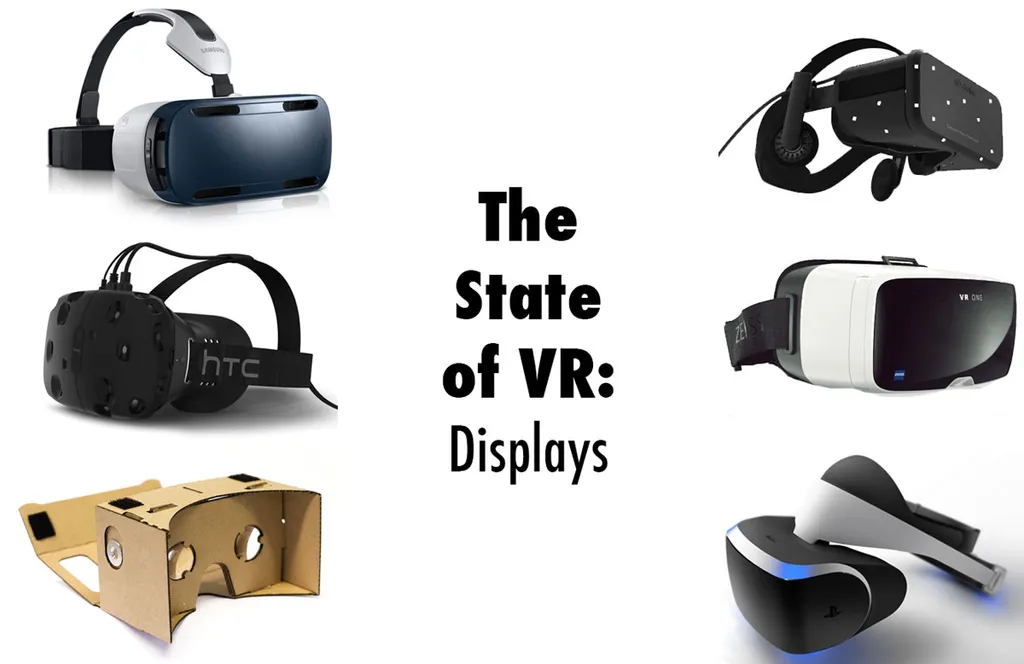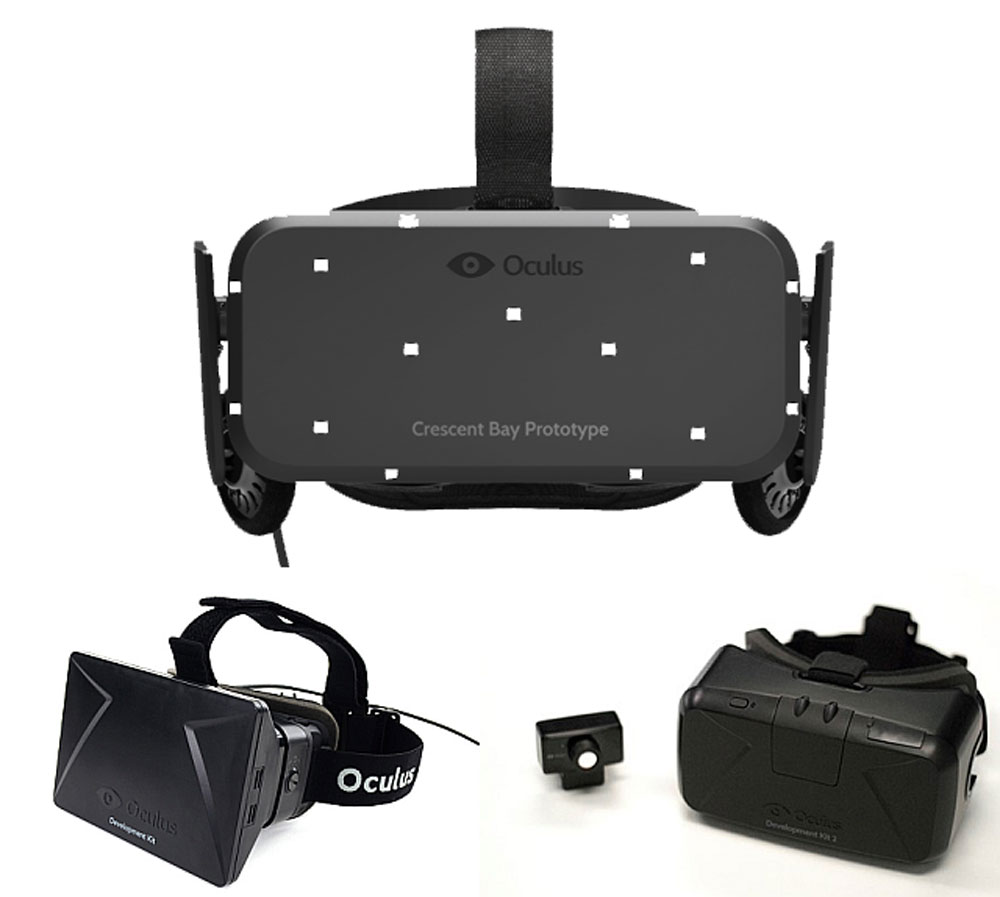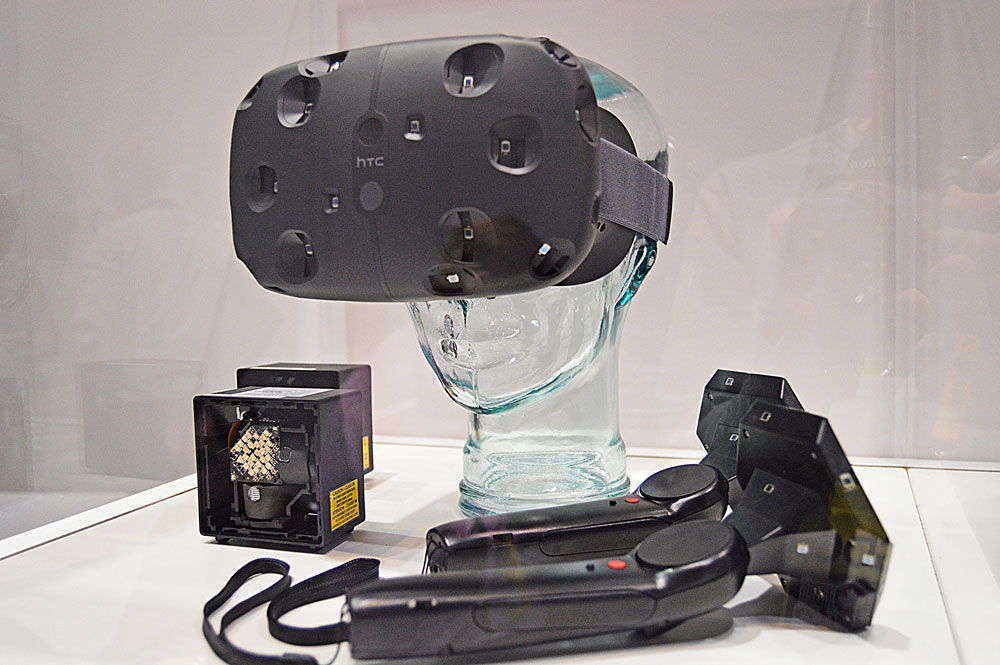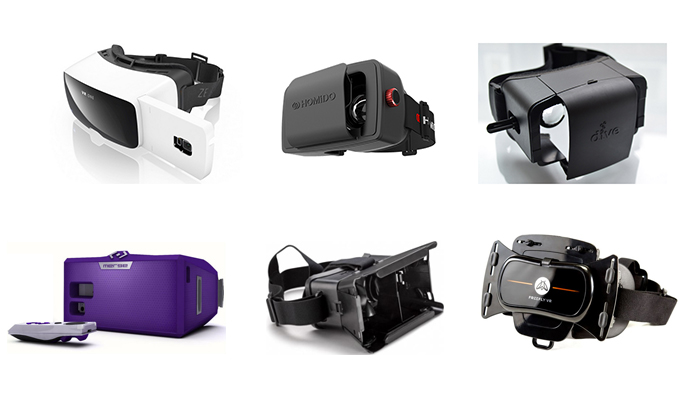Segmentation, it’s a common occurrence when disruptive new technologies come to market initially. It happened with the home video market as a number of different products (most notably VHS and Betamax) rushed to become the consumer standard for home video. It happened in the console video game industry as well, the first generation of consoles had seven options for consumers to choose from, four years later – during the second generation – that number had increased to nine. By the third generation of consoles however, the market had begun to contract and clear leaders began to emerge. Today, the console market is essentially dominated by two companies – Microsoft and Sony – with Nintendo paddling around in the kiddie pool doing who knows what. The point being, there is a pattern of expansion and contraction in new technology markets, and VR seems to be in line to follow that path.
Right now we are at a point where the VR hardware market is like a bag of popcorn after about a minute in the microwave – new things are popping up seemingly every second. Looking at every individual potential hardware option on the market is rapidly becoming a burdensome way of surveying the industry. It is much more effective to segment the market into head mounted displays (HMDs) and peripheral devices, with further subcategorization for each. The HMD market is rapidly becoming segmented along three lines: Console, Desktop and Mobile all of which may eventually feed into a common ecosystem (with many experiences being developed for as much cross platform support as possible in order to make them scalable). Mobile VR, in its current state, deserves further segmentation but we will return to that later.
Desktop VR
Desktop VR looks to tap initially into the massive potential market of gamers – one in every ten people in the world is a PC gamer – who are looking to run the top experiences in VR. This will require a number of consumers to go through a potentially expensive upgrade cycle in order to run the latest hardware. Companies like AMD and NVIDIA are aiming to drive the VR industry forward with their next generation of products like the new Titan card from NVIDIA which has been powering some of the most advanced VR experiences yet. Many games are built in a way that they have scalable settings, but it will still likely lead to consumers investing in upgrading their gaming rigs to the next generation level. Desktop VR consumers will likely be faced with the decision of how much to spend on upgrading their systems for VR.
Oculus Rift
The Oculus Rift is the HMD that started it all back up again. Prior to Palmer Luckey’s creation, VR had be relegated to the lands of bad 90s movies, a forgotten dream that many believed may never come true; in the years and billions since, that has all changed. The Rift, now on it’s (arguably) third generation prototype/development kit – the Crescent Bay, has changed a lot since it’s debut and Kickstarter in 2012. The display has improved significantly since the first developer kit (known as the DK1), resulting in a much crisper and more detailed picture, even when compared to other HMDs on this list. The addition of positional tracking (the ability to lean in and move to a degree through space, rather than just looking around) with the second development kit was a massive change that really helped to enable the feeling of Presence (which is the term used to describe that feeling of “being there”). That positional tracking has only been improved since the DK2, as the Crescent Bay allows you to “walk” around slightly in the environment, but nowhere near as much as HTC’s Vive. Also hindering the Oculus Rift at this time is a lack of a common input device, which the company promises they are hard at work on figuring out. The consumer version of the device will likely ship with some form of input, when that is however is still in the air, and we may see Oculus wait and see how the market responds to HTC’s efforts.
Pros
Great and improving display, solid and improving tracking, likely to have a content delivery ecosystem, wide developer support, $2.1bn in funding with Facebook backing, low cost (consumer version ~$350), extremely comfortable and lightweight
Cons
No release date yet, still no standard input, no “room scale” (will get to that in a minute), cords
HTC Vive
Up until this year’s GDC, the Oculus Rift was the unquestioned king of the VR HMD world. The Crescent Bay is an amazing piece of hardware… that being said HTC’s effort – dubbed the “Vive” is a step beyond what Oculus has currently shown. In terms of displays the two HMDs are fairly similar, the field of view (FOV) on the Vive is slightly better than that on the Crescent Bay, due to the vertical images being larger, while the display on the Crescent Bay feels a little more crisp (the exact specs of either display are not confirmed). The Crescent Bay is also slightly more comfortable and a lot less bulky (the form factor on the Vive we have seen, however is not necessarily the form factor we will see in the consumer release). Where the Vive really has an advantage however is in its tracking and input. Using the “Lighthouse” system, the setup has hypothetically unlimited range (although the system is advertised as having a 15’x15’ range, but adding additional modules will allow you to expand that range infinitely) and allows users to walk around in the room in virtual reality. This fundamentally changes the experience of VR for the better. The input included with the device also adds a large degree of immersiveness to the experience, with controllers that are tracked with pinpoint accuracy. The Vive also will come with access to an incredibly established content ecosystem with Valve through SteamVR. All of this added benefit, however, will likely come at an increased price point compared to other HMDs out there, but at least it has a release date, sometime in mid-November of this year.
Pros
Room Scale tracking with potentially unlimited range, beautiful display that should get better, large FOV, extremely good input, a release date, large established content ecosystem, two pass through cameras on the front of the device
Cons
Currently bulkier design, higher price point, cord management in the living room, requires space to get the full experience
Console VR
One of the issues with Desktop VR is that it is hard to develop experiences for the wide range of potential hardware on the market. The capabilities of consumer’s systems are extremely varied. This is not an issue when it comes to the console market. Right now, only one of the two console manufacturers has made an official play into the VR space, Sony – with project Morpheus, although Microsoft revealed an AR project titled Hololens earlier this year. The console gaming market has been growing steadily over the last three years and VR could easily be positioned to the next generation console market as an add on, potentially reducing consumer’s initial barrier to entry into VR.
Sony Morpheus

With over 20 million PS4s in the market, there is already a solid base from with Morpheus has to work with. Compared with the desktop HMDs the Morpheus stacks up well, with arguably the best looking display of the three, and a 120Hz refresh rate that allows for incredibly smooth experiences. The PS4’s hardware presents the Morpheus with a bit of a ceiling which is exceeded by the capabilities of NVIDIA’s Titan, however it should be noted that you can buy two PS4s (~$399 ea) and have money left over for a games for the cost of one Titan X card ($999). Currently there is no word yet on the price of the Morpheus, although we can expect it to be competitive with other HMDs on the market when it is released in “the first half of 2016.” Other than the graphical performance potential the device also lags behind its desktop counterparts in terms of the positional tracking, which simply is not as good as it is on the Crescent Bay or Vive. The Morpheus will use the built in input ecosystem on the PS4, with experiences using both the Dual Shock controllers as well as the PS Move controllers. Additionally, the device has been reported to be the most comfortable of all the HMDs on the market.
Pros
Arguably the crispest display of any HMD, extremely comfortable, built in input devices (Move controllers and DS4), consistent hardware platform, 20 million plus immediately potential customers, 120Hz refresh rate, potentially much cheaper to start from scratch (upgrading PC vs buying a PS4), release time frame
Cons
Experiences limited by hardware capabilities, positional tracking is not as good as the desktop counterparts
Mobile VR
Mobile VR exists at the intersection of the mobile revolution and VR, it is about bringing these immersive experiences with us. Currently there are a number of different devices which are masquerading under the moniker of Mobile VR but are not offering an experience on par with the true experience. For reasons we will get into in a moment, Google Cardboard and other ‘phone holder’ VR experiences simply do not equate to the experience you get with a product like Gear VR and thereby deserve their own subcategorization, which we will define as ‘Mobile VR Lite.’ Before we get into that lets take a look at the Gear VR.
Gear VR
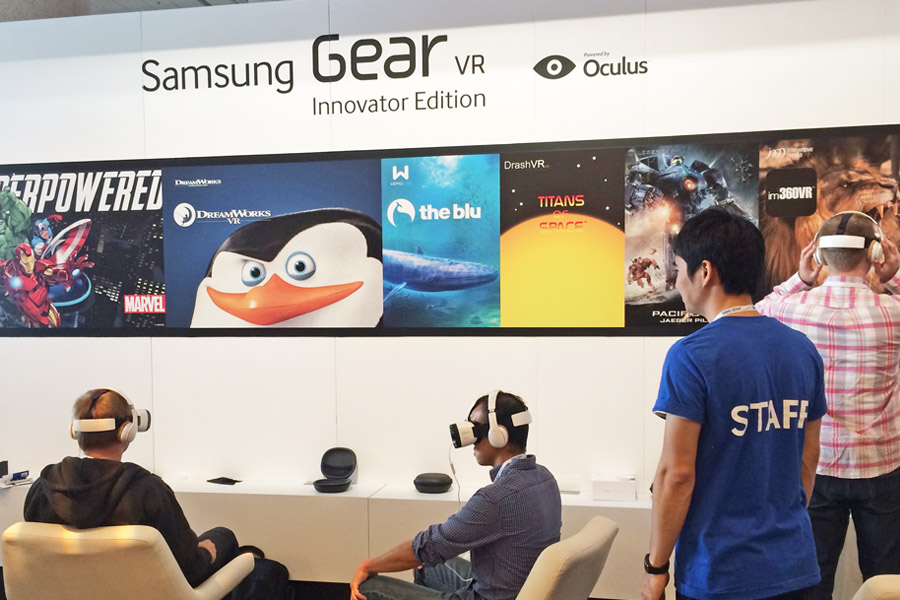
The lack of wires makes a massive difference, but so does the lack of positional tracking. It is a trade off that defines the current generation of Mobile VR experiences, but it is one that hopefully won’t have to be made for much longer as advances in computer vision technology lead us to a positional tracking solution for mobile. The Gear VR is the result of a collaboration between Oculus and Samsung. It uses Oculus’ VR technology in combination with either the Samsung Galaxy S6 or the Note 4. As a result, the device has a very detailed display that is comparable to that of any other HMD on the market, albeit it is a small step below what else is out there. In terms of performance, the device is also limited by the hardware of the phone. Restraints on both graphical capabilities and battery life (as well as heat issues) are pitfalls of the mobile system, that are to be factored against other options. The lack of wires means the device is extremely portable, giving it a lot of reach. As Oculus CTO John Carmack mentioned in his talk “every Gear VR has been on at least ten head.” In addition to the device’s accessibility, it is a small cost for owners of either the S6 or Note 4 to add the headset ($200) however those without the phone are in for a likely expensive upgrade. Of note for developers especially, the Gear VR recently opened a paid app store for VR apps as well meaning that developers have a way to monetize their experiences. Despite it’s limitations, the device is one of the best ways to currently show off VR, due to the portability factor. It should also be receiving a full consumer release as soon as Samsung’s next release cycle (later this year), as Carmack confirmed during his GDC keynote.
Pros
No wires, portable, low cost if you have the phone, crisp display, VR app store, pass through camera can enable AR experiences, “consumer version” likely coming this year.
Cons
Lack of positional tracking, high barrier to entry if you don’t own an S6 or Note 4, graphical performance limited by hardware, battery life, heat issues, no formalized input (there is a gamepad, but it really is awful)
‘Mobile VR Lite’
So what makes these types of mobile HMDs ‘lite’? Simply put they are lesser experiences. For those of you who have had the chance to try full-flavored craft beers versus the ‘lite beer’ that litters the halls of fraternity halls across America, you can understand the difference between ‘Mobile VR Lite’ and true mobile VR. Sure those lite beers had a purpose – they may have even been your first drink, but once you’ve tasted some Hofbräu, you simply can’t look at them in the same light any longer. True mobile VR has internal hardware in the headset itself that helps with the tracking and latency of the experiences. The Gear VR, for example, has an internal gyroscope, proximity sensor and accelerometer which work in conjunction with the sensors on the phone. This creates a noticeably more immersive and far less nauseating VR experience. While Cardboard and the various spin offs do allow for stereoscopic 3D VR viewing using your phone, they are far more similar to the View-Masters of old (which is ironic because Google and Mattel teamed up to create a View-Master of new) than they are the current crop of VR HMDs.
Google Cardboard

Surprisingly, the most popular VR HMD is also the cheapest – the Google Cardboard. Since it was announced at I/O last year, Google Cardboard has sold over 500,000 units (from various different distributors). The Cardboard was created as the result of a ‘20% project,’ but since has become a real Google project with an SDK for developers to use. The cardboard may not be a ‘true’ VR experience but it is enough for the thoroughly uninitiated to ‘get the idea.’ Its cheap cost (~$25) and easy brandability has made it a favorite among marketers and those trying to get as many people as possible to try VR (because you can’t describe it, you really need to experience it). Developers are able to create apps for the device and sell them within the Play Store. In the current ecosystem, the Cardboard has a distinct purpose, a cheap introductory point that utilizes technology already in millions of peoples pockets. For that purpose it has been awesome, I can recall enthralling and amazing a class of 4th graders with nothing more than a Cardboard and the basic roller coaster demo. It provides just enough ‘umph’ to get that initial wow factor based on novelty, that said it is a poor representation of where VR is as an industry.
Pros
Cheap, portable, versatile (compatible across Android and iOS, although the Play Store isn’t accessible on iOS), brandable
Cons
No additional internal hardware, durability, experience pales in comparison with other forms of VR
Other Phone Viewers
Currently there is another segment of the market, from Carl Zeiss VR ONE, to Homido, to Durovis Dive, to Archos VR, to Merge VR, to any of the other seemingly hundreds of other plastic (and other materials) phone based ‘Mobile VR Lite’ viewers have come onto the market in the last year. Ranging in prices from as low as $25 to about as high as $120. They offer an upgrade over Cardboard in so much as they aren’t made of Cardboard, but they essentially offer the same VR lite experience. They have no positional tracking, and no additional internal hardware supporting the experience (although Merge VR specifically has a small motion tracked controller). As the mobile phone market grows in conjunction with the Mobile VR market we will likely see a lot of the sensors that are currently included in the Gear VR for example to become standard internal devices in phones assuming the demand continues to grow (and all signs point to it doing so). At that point there may be a place for these other viewers, and for the hordes of iOS users who are looking for their first real taste of Mobile VR. It is unlikely however that Apple will adopt their phones to the VR market without adding some kind of formalized entry into the space, like the Gear VR, as well.
Pros
More durable than Cardboard, most are compatible with all types of phones (dependent on the model of HMD), portable, no wires, ease of use. Less expensive and accessible to the general market.
Cons
No positional tracking, no internal hardware, limited software support (especially for iOS), no standardization (different SDKs and platforms)
Verdicts
So which HMD is the winner? The answer is it is way too early to make that call. They say a rising tide raises all ships and we are still in the rising tide phase for VR. With every new update, every advancement, the industry moves forward as a whole. HTC’s Vive project didn’t eat Oculus’ lunch, but rather has forced them to turn in their baloney sandwich for a steak. It will likely push them to come out with an even better product when they come to market. The same can be said for the market as a whole, advancements in any phase of VR – Mobile, Desktop or Console – drive the industry as a whole forwards towards a common goal. Right now it may seem like there are some clear winners in each category but the landscape even one year from now will look completely different. With challengers like the ever-mysterious and heavily-funded Magic Leap waiting in the wings, wild science fiction-esque brain machine interface projects like MindLeap, and emergent eye tracking technology from companies like Tobii and FOVE, there is a lot still to be added to the puzzle before things fully contract. Each of the three phases of VR will function slightly differently as the medium develops but each will play a vital role in defining the ecosystem and growing the medium into the public consciousness. The rate of technological adoption is only growing. Looking back, it took 75 years for the Telephone to reach 50 million users, 13 for the TV, 4 for the Internet. Angry Birds reached that mark in 35 days. If those trends suggest anything for VR it means that we will see it reach a mass market, and reach a mass market quickly, when that happens the market will decide which products become the champions of the industry, and which ones go the way of Betamax, Laserdisc, and Dreamcast.

